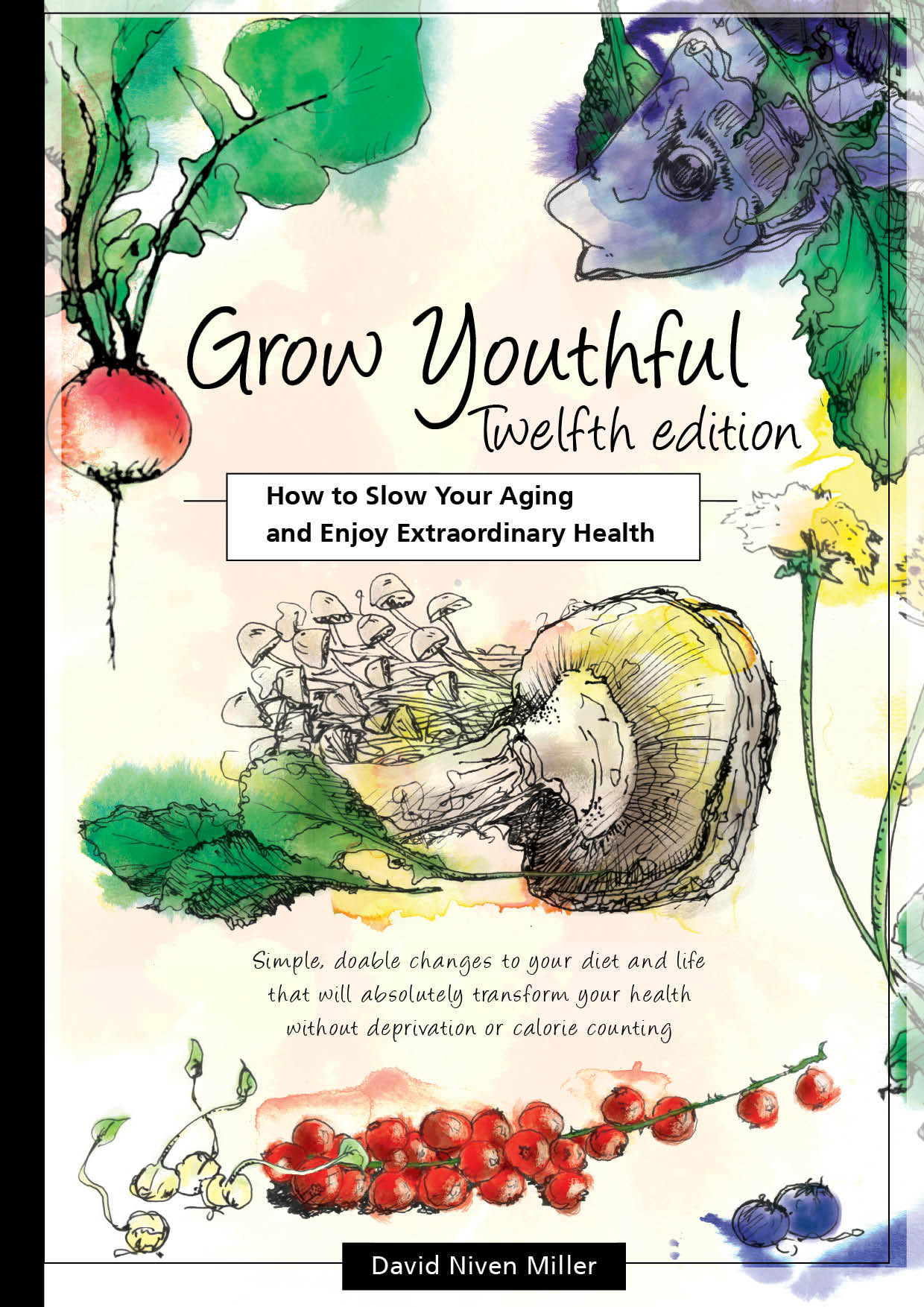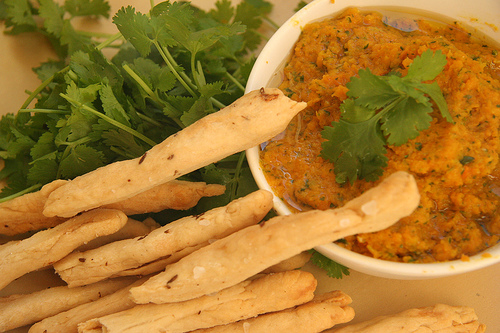
Dips
(1st two recipes courtesy of Tig)
Guacamole (avocado dip)
Carrot Dip
Humus (Hummus, Hoummos or Chickpea dip) Raw version
Humus (Hummus, Hoummos or Chickpea dip) Cooked version
Legumes for long life?
Guacamole (avocado dip)
2 ripe avocados
Juice of 1 lemon
2-3 crushed garlic cloves
1/2 teaspoon salt, black pepper and chili powder

It is traditionally made by mashing ripe avocados with a molcajete (mortar and pestle) with sea salt. Some recipes call for limited tomato, spicy minced chile such as jalapeño, white onion, lime juice, and/or additional seasonings.
1 diced medium tomato
1/4 burpless cucumber, peeled and seeds removed then finely diced
1/2 red onion, finely diced
1/2 cup natural yogurt
- Cut the avocados in half. Scoop out the pulp
- Mash the avocado
- Add all the remaining ingredients and mix in well
- Check the flavourings
- Chill before serving
Carrot Dip
1/4 kg carrots, peeled and grated
1 small chopped onion
2 small cloves of garlic
1 tablespoon finely sliced fresh coriander
1 teaspoon ground coriander
1 teaspoon cumin seeds
1/4 cup natural yogurt

Carrot & Coriander Dip
- Lightly dry roast the coriander and cumin seeds for 30 seconds then grind
- Lightly fry the onion and garlic in a little oil to soften
- Add the grated carrot and the spices and cook lightly
- Season with a little salt and pepper
- Place in a blender together with the yogurt
- Blend to a smooth paste
- Check the seasonings
- Chill before serving
Humus (Hummus, Hoummos or Chickpea dip)
Raw Humus
1 cup of dry chickpeas (garbanzo beans)
3/4 to 1 teaspoon sea salt
2 cloves of garlic
1 tablespoon tamari
Juice of 1 lemon
1 tablespoon extra virgin olive oil
1/2 cup tahini
1/4 cup of parsley, sliced
2 spring onions, sliced
1/2 teaspoon cumin powder
1/4 teaspoon black pepper
dash of cayenne pepper
- Soak the chickpeas for 8-12 hours, changing the water 2-3 times. Keep the chickpeas damp for a further 1-2 days, rinsing 2-3 times each day. After this time the chickpeas should have 2 cm sprouts, and are much more nutritious than the inert beans. Pick out any discoloured or slimy beans
- Place the chickpeas in a food processor together with all the remaining ingredients and blend to a smooth paste. Add a little cold filtered water if required
- Taste and correct seasonings
- Chill before serving
Some people like the taste of raw humus, others don't. Chickpeas are the only legume that you may consider eating raw (sprouted, of course). The benefits and ease of digestion will vary between individuals.
Humus (Hummus, Hoummos or Chickpea dip)
Cooked Humus
1 cup of dry chickpeas (garbanzo beans)
3/4 to 1 teaspoon sea salt
2 cloves of garlic
1 tablespoon tamari
Juice of 1 lemon
1 tablespoon extra virgin olive oil
1/2 cup tahini
1/4 cup of parsley, sliced
2 spring onions, sliced
1/2 teaspoon cumin powder
1/4 teaspoon black pepper
dash of cayenne pepper
- Soak the chickpeas for 8-12 hours, changing the water 2-3 times. Keep the chickpeas damp for a further 1-2 days, rinsing 2-3 times each day. After this time the chickpeas should have 2 cm sprouts, and are much more nutritious than the inert beans. Pick out any discoloured or slimy beans
- After sprouting, the beans need only half an hour of cooking. Cover with cold water then add the salt. Bring to the boil and cook the chickpeas until they are very soft. Scrape off and discard the white scum that forms in the first 5 minutes
- Drain and reserve the liquid
- Place the chickpeas in a food processor together with all the remaining ingredients
- Blend to a smooth paste. Add a little of the reserved liquid if required
- Taste and correct seasonings
- Chill before serving
Legumes for long life?
Researchers (1) found that people who ate three quarters of a kilo (one and a half pounds) of chickpeas (garbanzo beans) per week for 12 weeks showed an improvement in their total cholesterol levels compared with another group who had no chickpeas. More importantly, their insulin levels lowered and stabilised, and they lost a small amount of weight. All this was from the chickpeas only, without dieting or exercising.
Generally, legumes are a good source of proteins, vitamins, minerals and other nutrients. They all have a low glycemic index, and are use by many people around the world as a partial replacement for animal proteins. However, legumes are difficult to digest, especially by those with weak digestion. Garbanzo beans are one of the most digestible legumes, along with lentils.
References
1. Chickpeas may influence fatty acid and fiber intake in an ad libitum diet, leading to small improvements in serum lipid profile and glycemic control. Pittaway, J. K. et al., Journal of the American Dietetic Association. 2008 Jun;108(6):1009-1013.
